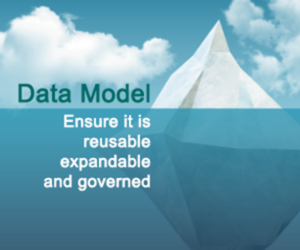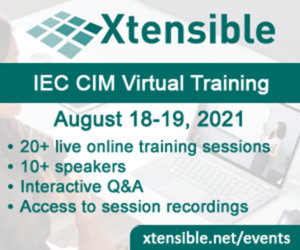
An enterprise data model will help utilities drive value out of the data platform in fulfilling the holistic approach of semantic reconciliation, sourcing and data governance, as well as the application of data transformation rules and metadata enrichment.
In late 2017, Green Tech Media published an article in which they predicted that U.S. utilities would spend upwards of $20 billion on customer analytics through 2021. Keep in mind that projection was only for customer analytics, not including asset health, market trade, grid operational sustainability and awareness or other areas. Utilities need to ask themselves, have we invested enough in a data model that will support our analytic journey? Better yet, do you have a data model and is it driving our digital transformation?
Why have a data model?
It is unrealistic to expect the various data required for developing analytical models to be easily correlated and ready for use. The data resides in various functional domains and IT systems, which are not designed to enable a natural correlation of the data. Often, many of the data elements required for building analytical models are not managed and maintained in enterprise systems. The decision regarding the right approach for developing the data model is critical and multiple options are available.
An enterprise data model will help drive value out of the data platform in fulfilling the holistic approach of semantic reconciliation, sourcing and data governance, as well as the application of data transformation rules and metadata enrichment. Does your data model allow your data platform to operate at its peak operational efficiency, regardless of the technologies used by your data platform?
Analytic Iceberg Effect
An analytic use case always has value for the enterprise. Ask yourself how much reuse you are gaining each time you start another analytic use case? This is what we refer to as the Iceberg Effect! At the surface, the use case seems moderate; however, it is what lies beneath the surface that is big. The “Iceberg” of the analytic use case translates to:
- Finding and sourcing the data

- Understanding the data
- Cleaning the data
- Mapping the data
- Making decisions around the data; how will you actively continue to govern it?
Research has shown that traditionally 20% of an effort is spent on the actual data analytics or getting value out of the data (the top of the “iceberg”), with 80% spent in what we at Xtensible refer to as data “Janitoring”. However, if an effective data model and governance is not put in place, each analytics use case continues to repeat, addressing the bottom of the “iceberg”.
How to start an enterprise model
As with anything, one option is to start with a blanket slate; however, that requires a tremendous amount of upfront work. Another approach is to use industry-standard information models such as the IEC Common Information Model (CIM), IEC 61968/61970/62325, which provides standard terminology for enterprise semantics. One of the advantages of CIM is that it provides an excellent foundational data model for most of the functional domains in the electric utility industry. With contributions from industry experts and product companies, CIM has become more significant and more abstract than custom-built models, and it has the benefit of not pushing the integrator or analytics designer into the proverbial corner.
Some might comment that CIM is “big” and complex. Yes, that is true but the utility organization is complex, and you don’t have to implement it all at once. Focus on one key area or asset analytic use case at a time to help reduce the size of the “iceberg” under the vast ocean of possibilities, providing a means for reusability, expansion and helping to ensure a clear semantic mean of the data.
Enable frictionless access to the data!
Who is using it?
 Naturally, one may ask who is using CIM and taking a standards-based approach, a common question we get at Xtensible. To get an answer to this question, we suggest you visit the Xtensible blog, which features the recent post, “Are Utilities in the U.S. Utilizing the IEC CIM?”
Naturally, one may ask who is using CIM and taking a standards-based approach, a common question we get at Xtensible. To get an answer to this question, we suggest you visit the Xtensible blog, which features the recent post, “Are Utilities in the U.S. Utilizing the IEC CIM?”
If you are interested in learning more, please contact Xtensible; to learn more about the IEC CIM, join us at Virtual IEC CIM Training: Basics and Uses, which will run August 18-19, 2021. Get firsthand experience on how utilities have and are utilizing the IEC CIM to support analytics.
Michael Covarrubias is the Managing Partner and VP of Strategy and Solutions at Xtensible.














